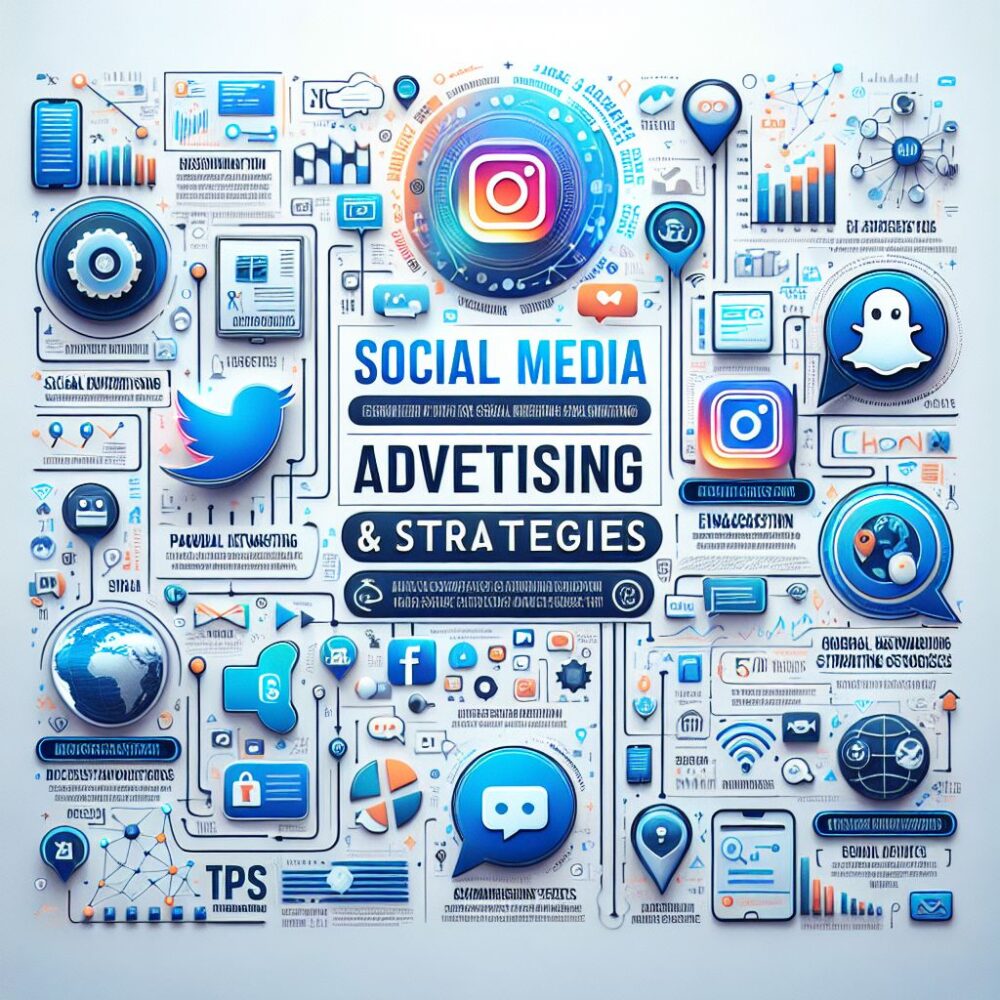Embark on your print-on-demand journey! In this guide, we’ll unveil the essential tactics and strategies for building a successful online merchandise business. Whether you’re a seasoned entrepreneur or new to the game, learn how to leverage print-on-demand services to create, market, and sell custom products. Dive into the world of online commerce and discover how to turn your creativity into a profitable venture effortlessly.
Key Takeaways
-
Understanding the print-on-demand model is crucial for a low-risk entry into e-commerce.
-
Choosing a niche based on market research and trends can set you apart from competitors.
-
A user-friendly online storefront is essential for attracting and retaining customers.
-
Product design is key to creating merchandise that resonates with your target audience.
-
Reliable print-on-demand partners are vital for product quality and customer satisfaction.
Starting Strong with Print-on-Demand
Imagine turning your creative ideas into products that people around the world can purchase with just a click. That’s the magic of print-on-demand. It’s a straightforward concept: products are printed and shipped once an order is placed, eliminating the need for inventory. This means you can start a business with minimal upfront costs, test different designs, and scale with ease.
Quick Overview of the Print-on-Demand Model
So, how does print-on-demand (POD) work? You create designs, apply them to products, and list them in your online store. When a customer makes a purchase, the order is sent to your POD provider, who prints, packs, and ships the product directly to the customer. You pay for the product production, and the profit margin is yours to keep.
Most importantly, this model allows you to create a wide range of products, from t-shirts and hoodies to books and wall art. The beauty of POD is that it’s a canvas for your creativity, and the possibilities are nearly endless.
Core Benefits for Entrepreneurs
POD is a game-changer for entrepreneurs. Here’s why:
-
Low startup costs: No need to buy inventory, so you can start with very little money.
-
Zero inventory risks: You won’t be left with unsold stock, which means no wasted investment.
-
Flexibility: Test designs without committing to bulk orders.
-
Automation: With the right partners, everything from printing to shipping is taken care of.
-
Customization: Offer personalized products to stand out in the market.
Choosing Your Battles: Selecting the Right Niche
Before diving into the world of POD, you’ll want to choose a niche. This is your playground, where you’ll unleash your creativity and connect with customers who share your passion.
Uncovering Profitable Niche Markets
Here’s the deal: the more specific your niche, the better. You’ll face less competition and can target your marketing more effectively. Think about your interests, trends you’ve noticed, and gaps in the market. What are people passionate about? What’s underserved?
Let’s say you’re into sustainable living. That’s a great start. Now, narrow it down. Maybe you focus on zero-waste kitchen products, or eco-friendly pet supplies. The key is to find a niche where you can be a big fish in a small pond.
Analyzing Trends for Product Opportunities
To spot trends, use tools like Google Trends, social media, and marketplaces like Etsy or Amazon. Look for rising interests and check out what’s selling. Combine this data with your niche to create products that are both unique and in demand.
For example, if you’ve noticed an uptick in people adopting pets, and your niche is eco-friendly products, you might create a line of sustainable pet toys. It’s all about connecting the dots to find your sweet spot in the market.
Creating a Magnetic Online Storefront
Your online store is your business’s home. It’s where your products live, and it’s where customers come to shop. You want it to be inviting, easy to navigate, and reflective of your brand’s personality.
Designing a User-Friendly E-commerce Website
A user-friendly website is a must. This means clear navigation, high-quality product images, and an easy checkout process. Platforms like Shopify or WooCommerce can help you set up a professional-looking store with all the necessary features.
Remember, your store should be as unique as your products. Customize it to match your brand’s vibe, whether that’s quirky and fun, sleek and modern, or warm and rustic.
Essential Features for a Successful Store
Here are some features your store should have:
-
Mobile responsiveness: Most people shop on their phones, so make sure your site looks good on all devices.
-
SEO optimization: Use keywords and meta descriptions to help your store show up in search results.
-
Customer reviews: Social proof can encourage others to buy.
-
High-quality visuals: Photos and videos that show off your products in the best light.
-
Clear policies: Shipping, returns, and privacy policies should be easy to find and understand.
With these features, your store won’t just attract visitors—it’ll turn them into customers.
Product Design Dynamics: Turning Ideas into Merchandise
Now, let’s talk about product design. This is where your ideas come to life. Whether you’re a seasoned artist or new to design, the goal is the same: create products that people love.
Think about what makes a design great. It’s not just about looking good—it should also connect with your audience. Maybe it’s a funny quote that resonates, an eye-catching pattern, or a powerful message.
Here’s the thing: you don’t need to be a design wizard. Tools like Canva or Adobe Spark make it easy to create professional-looking designs without any experience. And if you need a little extra help, freelance sites like Fiverr or Upwork are full of talented designers who can bring your vision to life.
But, let’s not forget about the products themselves. Choose items that fit your niche and designs. If you’re all about that eco-friendly life, organic cotton t-shirts or reusable tote bags might be your go-to.
Keep an eye on quality, too. Your designs might be stellar, but if they’re printed on subpar products, customers won’t come back. Order samples to ensure the quality meets your standards and aligns with your brand’s values.
In the next part, we’ll dive into finding the right print-on-demand partners and how to market your store like a pro. Stay tuned!
Partnerships for Success: Sourcing Reliable Print-on-Demand Providers
Finding a print-on-demand partner is like picking a dance partner — you want someone who can move with your rhythm and won’t step on your toes. This partner will handle your product creation, inventory, and shipping, which means they have a huge impact on your customer satisfaction.
Evaluating Providers for Quality and Reliability
When it comes to choosing a print-on-demand provider, quality and reliability should be your top priorities. You’ll want to look for:
-
Product quality: Do they offer high-quality products that won’t fall apart after one wash?
-
Printing quality: Is the print clear, sharp, and durable?
-
Shipping speed: How quickly do they fulfill orders?
-
Customer service: Will they be there to support you if something goes wrong?
Don’t be shy to ask for samples, and read reviews from other store owners to see what their experiences have been like. This homework upfront can save you from headaches down the road.
Smooth Operations: Integrating with Your Online Store
Once you’ve picked a provider, integrating them with your online store should be a breeze. Most providers offer plugins or apps that connect directly to your store’s platform, automating the order and fulfillment process. This means when someone buys from your store, the order goes straight to your provider without you having to lift a finger.
Marketing Mastery: Spreading the Word
Having a great product and a beautiful store is just the start. Now, you need to let the world know you exist. Marketing is how you attract customers and turn them into fans of your brand.
Developing a Solid Marketing Strategy
Your marketing strategy is your game plan for reaching potential customers. It should include:
-
Defining your target audience: Who are you trying to reach? What do they like? Where do they hang out online?
-
Setting goals: What do you want your marketing to achieve? More website traffic? More sales? Brand awareness?
-
Choosing your channels: Will you focus on social media, email marketing, content marketing, or a mix of these?
Think about your niche and where your audience spends their time. If you’re selling eco-friendly yoga mats, Instagram and Pinterest might be where you’ll shine. If you’re all about gaming merch, Twitch and YouTube could be your battlegrounds.
Engaging Your Audience with Social Media and SEO
Social media is a powerful tool for building relationships with your customers. Share behind-the-scenes peeks, new designs, and customer photos. Use hashtags, run contests, and engage with your followers. It’s not just about selling; it’s about creating a community around your brand.
SEO, or search engine optimization, is how you get your store to show up in search results. Use keywords in your product titles and descriptions, write blog posts about topics related to your niche, and make sure your site is fast and mobile-friendly.
Effective Ad Campaigns on a Budget
Ads can be a quick way to drive traffic to your store, but they can also be expensive. Start small with a budget you’re comfortable with, and test different ads to see what works best. Facebook and Instagram offer targeted advertising options that can help you reach the right people without breaking the bank.
Customer Satisfaction: The Secret Ingredient
Happy customers are the best advertisement for your print on demand business. They’ll come back for more, and they’ll tell their friends about you. That’s why customer satisfaction should be at the heart of everything you do.
Building a Reputation with Stellar Customer Service
Great customer service is about more than just solving problems. It’s about making your customers feel heard and valued. Be prompt in your responses, be generous in your solutions, and always go the extra mile to make things right.
Leveraging Customer Reviews and Feedback for Improvement
Customer reviews are gold. They give you insight into what you’re doing well and where you can improve. Encourage customers to leave reviews, and take their feedback seriously. Use it to make your products and customer experience even better.
Scaling Up: Growing Your Print-on-Demand Business
Once you’ve got a steady stream of orders and a solid customer base, it’s time to think about scaling up your print-on-demand business. This means expanding your product range, reaching new markets, and maybe even increasing your prices.
Analyzing Data for Strategic Expansion
Data is your roadmap for growth. Keep an eye on:
-
Sales trends: Which products are selling well, and which aren’t?
-
Customer behavior: Where are your customers coming from? What are they looking at on your site?
-
Marketing effectiveness: Which marketing efforts are driving the most traffic and sales?
Use this information to make informed decisions about where to invest your time and money.
Automation and Outsourcing for Enhanced Efficiency
As your business grows, you’ll want to look for ways to streamline your operations. Automation tools can help you manage your marketing, customer service, and even design processes more efficiently. Outsourcing tasks like accounting or graphic design can free up your time to focus on strategy and growth.
Remember, the key to scaling is to do it sustainably. Grow too fast, and you might struggle to maintain quality and customer service. Grow too slow, and you might miss out on opportunities. Find the pace that works for you and your business.
In the next part, we’ll wrap up with a look at the big picture: measuring success and setting yourself up for long-term profitability. Keep these strategies in mind, and you’ll be well on your way to building a thriving print-on-demand business.
Looking at the Big Picture: Measuring Success
Now that you’ve got the wheels in motion, it’s time to step back and look at the big picture. How do you know if your print-on-demand business is truly successful? It’s not just about sales and profits. Success is also about brand recognition, customer loyalty, and your own satisfaction with the work you’re doing.
Success is a multi-faceted beast, but don’t let that intimidate you. By setting clear goals and regularly reviewing your progress, you’ll be able to steer your business in the right direction. And remember, success doesn’t happen overnight. It’s the result of consistent effort, learning from mistakes, and adapting to changes in the market.
Identifying Key Performance Indicators (KPIs)
Key Performance Indicators, or KPIs, are your scorecard. They help you track how well your business is doing against your goals. But which KPIs should you be looking at? Here are a few to consider:
-
Sales Revenue: This one’s straightforward. How much money are you bringing in?
-
Customer Acquisition Cost (CAC): How much does it cost you to gain a new customer?
-
Customer Lifetime Value (CLV): How much does a customer spend over their lifetime with your brand?
-
Conversion Rate: What percentage of visitors to your store actually make a purchase?
-
Order Fulfillment Time: How quickly are orders processed and shipped?
Keep a close eye on these KPIs, and you’ll have a good idea of where your business stands. If something’s off, you’ll know exactly where to dig in and make improvements.
But KPIs aren’t just numbers. They’re stories. They tell you what’s working, what’s not, and where there’s room for growth. For instance, if your CLV is low, you might need to focus on customer retention strategies like loyalty programs or email marketing.
For example, let’s say your conversion rate is 2%. That means for every 100 visitors to your store, 2 make a purchase. If you’re aiming for a 4% conversion rate, you might experiment with different product descriptions, clearer call-to-actions, or a simplified checkout process.
Benchmarking Against Industry Standards
It’s also helpful to see how you stack up against the competition. This is where benchmarking comes in. By comparing your KPIs to industry standards, you can see where you’re excelling and where you need to up your game.
Let’s say the average CAC in your niche is $25, but you’re spending $40. That’s a sign you need to optimize your marketing efforts. On the flip side, if your sales revenue per customer is above average, you’re doing something right—keep it up!
FAQs
Got questions? You’re not alone. Here are some of the most common questions about starting and running a print-on-demand business. For a comprehensive guide, check out this article on how to start a print-on-demand business.
What Are the Startup Costs for a Print-on-Demand Business?
The beauty of print-on-demand is that startup costs can be pretty low. For a more detailed breakdown, you might want to check out how to start a business with print on demand.
-
Domain: $5-$20 for the first year.
-
Hosting: $50-$200 per year, depending on your platform.
-
Website Design: $100-$500 if you’re hiring a designer or buying a premium theme.
-
Marketing: Varies widely, but you can start small with organic strategies like SEO and social media.
Remember, these are just estimates. Your actual costs will depend on your specific choices and how much you’re willing to do yourself.
How Do I Choose the Best Print-on-Demand Service Provider?
Choosing the right print-on-demand provider is crucial. Look for a partner with a good reputation for quality and reliability. Read reviews, ask for samples, and compare their product offerings. Make sure their integration with your e-commerce platform is seamless, and that their shipping times meet your customers’ expectations.
Can You Offer Personalization in a Print-on-Demand Business?
Absolutely! Personalization is a fantastic way to stand out. Many print-on-demand services offer options for customers to add their own text or images to products. Just be sure you have a clear process for handling personalized orders, as they can be more complex to fulfill.
What Are Some Effective Marketing Strategies for a Print-on-Demand Store?
Effective marketing strategies for a print-on-demand store include:
-
Content Marketing: Create blog posts and videos related to your niche to attract an audience.
-
Social Media: Engage with your community and showcase your products on platforms where your audience hangs out.
-
Email Marketing: Build a list and keep your subscribers updated with news, deals, and product launches.
-
Influencer Partnerships: Collaborate with influencers who resonate with your brand to reach a wider audience.
Test different strategies to see what works best for your business and audience.
How Can I Scale My Print-on-Demand Business?
Scaling your print-on-demand business involves expanding your product line, exploring new markets, and optimizing your marketing. Here’s how to do it:
-
Introduce new products: Based on what’s popular or requested by customers.
-
Target new audiences: Expand your reach by marketing to different demographics or geographic locations.
-
Optimize your ads: Refine your advertising to get more bang for your buck.
-
Automate and outsource: Streamline operations to handle increased volume without sacrificing quality.
Most importantly, always listen to your customers and adapt to their needs. They’re the ones who will help your business grow.
And there you have it—a comprehensive guide to starting and scaling a print-on-demand business. Armed with these strategies, you’re ready to turn your creative ideas into a thriving online merchandise empire. Go forth and create!





Leave a Reply